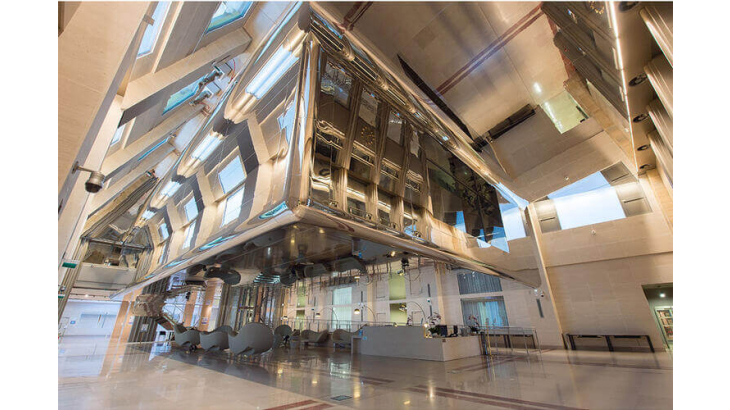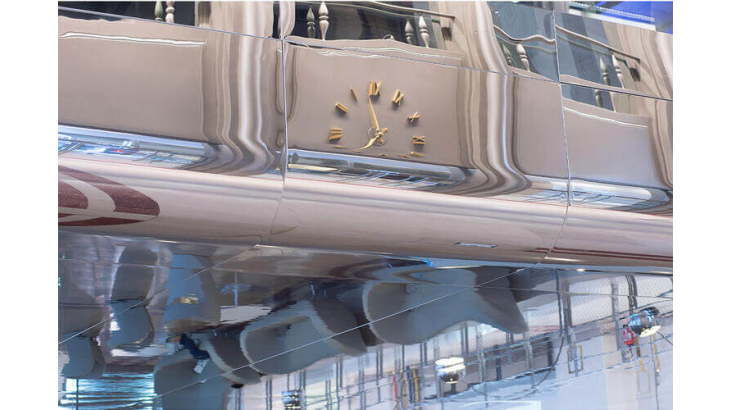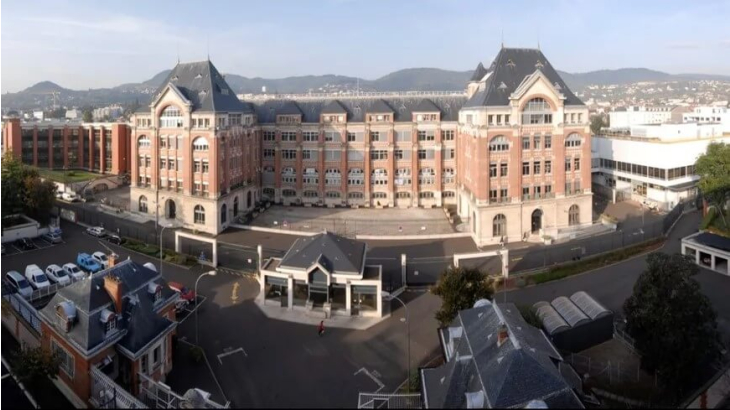The Banque de France, guardian of France’s gold reserves
The fourth largest national gold reserves in the world
The Banque de France holds 2,436.8 tonnes of gold in its Souterraine or underground vault, which is located 27 metres below its head office in the heart of Paris. This gold makes up France’s national gold reserves. France has the fourth largest gold reserves in the world after the United States, Germany and Italy (and excluding the International Monetary Fund). The Banque de France records these reserves in its balance sheet and makes sure they are secure and fit for trading on the international market. To be marketable, gold bars must meet the specifications of the London Bullion Market Association (LBMA), a professional body set up in 1987.
An important reserve asset
Gold has played no monetary role since the 1970s. However, it still has a high, albeit fluctuating value that is determined by the market. The size of the Banque de France’s gold reserves has remained unchanged since 2009, and they are currently valued at over €125 billion. They account for less than 10% of the Banque de France’s total assets and amount to 5% of France’s GDP.
Citéco: more than a museum
The Banque de France has converted its former branch in Paris’s 17th arrondissement into the Cité de l’Economie, or Citéco for short. The site is a listed building and a former hôtel particulier built in the Neo-Renaissance style. Inside, it has been transformed into a unique destination targeted at students interested in money and economics, and at lovers of art and heritage. Citéco is more than a museum: it is a learning experience brought to life with interactive games. Its strong room houses treasures from the Banque de France’s collections.
Find out more
More than just a central bank – an institution that is unique in Europe
As an institution of the French Republic with a history spanning more than two centuries, and as guardian of the currency on behalf of French and European citizens, the Banque de France has an exceptional heritage. Discover some remarkable places below.
The underground vault – a subterranean fortress
A place of legend like Fort Knox in the United States, the underground vault is a space buried deep beneath the Hôtel de Toulouse that has housed the Banque de France's gold reserves since 1927.
The strongroom of the Hôtel Gaillard
In this former branch of the Banque de France, now the Citéco museum, this extraordinary room lined with thousands of safes is protected by a moat and a drawbridge.
The trading room – at the heart of the financial system
The trading room is the control tower from which the Banque de France maintains a leading presence on the foreign exchange and fixed income markets in Paris, as well as New York and Singapore.
The suspended auditorium – an architectural feat
Suspended high up by means of an inverted U-shaped structure, this 200-seat auditorium makes use of the most advanced shipbuilding techniques.
A 222-year-old start-up
Since its founding, the Banque de France has always kept pace with France and Europe's economic development: faithful to its missions, combining continuity with adaptation to present-day challenges, it has always endeavoured to look to the future. Its rich heritage attests to its commitment to innovation in all its activities.
Le Lab – a space dedicated to experimentation and innovation
Le Lab is an open innovation centre set up by the Banque de France to support its missions and activities. It develops ties with external innovators and seeks to involve them in its experiments.
Find out more
The Chamalières printing works – constant modernisation
Located on the outskirts of Clermont-Ferrand, this printing works has been in operation since 1917 and has constantly evolved. The Refondation project plans to move its operations to the Vic-le-Comte site (Puy-de-Dôme) by 2026.
A place steeped in history
Over the course of its more than 200-year history, the Banque de France has built up a unique heritage that attests to its growth and to the evolution of its missions. These architectural and artistic treasures, of which the Hôtel de Toulouse is emblematic, vividly evoke its past.
The Galerie Dorée – a masterpiece of French art
Built between 1635 and 1640 by François Mansart to house a collection of Italian paintings, it was completely refurbished at the beginning of the 18th century, and then restored in the 19th century.
The Hôtel de Toulouse – the historic heart of the Banque de France
A sumptuous residence from the grand siècle, the Hôtel de Toulouse was built by François Mansart for Louis Phélypeaux de la Vrillière. It became the property of the Count of Toulouse and then the Duke de Penthièvre in the 18th century, before becoming the head office of the Banque de France from 1808.
The Governor’s office
Strategically located opposite the Galerie Dorée, the Governor's office has not moved since the Banque de France transferred to the Hôtel de Toulouse in 1811.
Visiting the Banque de France
The Banque de France’s head office can be visited during the European Heritage Days. Outside the Heritage Days, the Galerie Dorée of the Hôtel de Toulouse can be visited on some Saturday mornings, by appointment only.
Updated on the 12th of January 2024















